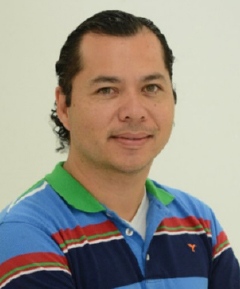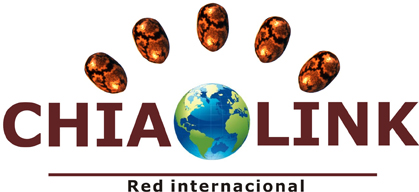
Laboratory of Food Biotechnology
Center for Research and Advanced Studies of the National Polytechnic Institute (IPN), Irapuato Unit
Irapuato, Gto, México
Director Prof: Prof. Dr. Octavio Paredes López.
ACTIVITY GROUP’S DESCRIPTION
Our laboratory had been focused on the research, identification and evaluation of compounds with potential nutraceutical effect in crops of Mesoamerican origin such as nopal, tuna, bean, amaranth, huitlacoche, various berries and chia. We also work with bioactive peptides that can present different activities, such as: opioid activity and antagonist, antithrombotic, immunomodulatory, antimicrobial, hypotensive and anti-hypercholesterolemic effect.
 We have collection of cultivated and wid chia seeds from all over Mexica territory. Salvia hispanica plant and seeds have een characterized as well as morphologically described. Also, growth and agronomical conditions have been evaluated.
We have collection of cultivated and wid chia seeds from all over Mexica territory. Salvia hispanica plant and seeds have een characterized as well as morphologically described. Also, growth and agronomical conditions have been evaluated.
Proximal analysis of chia seeds included 32-38% of fiber, 32-37% of fat and 15-19% of protein. Based on the solubility criteria, reserve proteins were extracted and the major fraction for all the lines studied was globulins (9.3-15.5 Μ g/ml), followed by albumins (8.9 to 13.6 Μ g/ml), glutelins (6.0 to 9.7 Μ g/ml) and prolamins (1.0 to 5.2 Μ g/ml). Protein fractions were in vitro digested, and the resulting peptides were evaluated. ABTS and DPPH assays showed that peptides from albumins and globulins comprise high antioxidant capacity; they also showed high antihypertensive potential. Besides, peptides from prolamins and globulins exhibited high capacity to chelate ferrous ions. Hence, chia could be considered as a seed with antioxidant potential and as novel antihypertensive source, which are important factors to include chia in the human diet. Also, chia seed is the richest natural source of Ω-3 fatty acids, essential for health and effective to reduce cardiovascular conditions, cholesterol and triglycerides. The total content of unsaturated fatty acids (linoleic and linolenic acid) was more than 80% in the chia genotypes evaluated. Ω-3 (linolenic acid) fatty acid was found in the highest proportion (60 and 63%).
Chia varieties exhibited different concentrations of total phenolic compounds; however, they comprised high concentrations of these compounds with antioxidant capacity. The most abundant phenolics were ferulic, chlorogenic, cafeic, gallic, protocatecuico and rosmarinic acids. We also have identified the genes that code the expression of these compounds.
RESEARCH TEAM

Lic. Talía Hernández Pérez
Auxiliar de Investigación

Dr. Domancar Orona Tamayo
Profesor Asociado (Departamento de Investigación y Posgrado)

Dra. María Elena Valverde
Auxiliar de Investigación
CHIA INVESTIGATIONS

PUBLICACIONES
- Orona Tamayo, D., Valverde M. E., Montero Vargas, J., Moreno Pedraza, A., Pelaez Hernández, P., Montes Hernández, S., Cibrián Jaramillo, A., Winkler, R. y Paredes López, O. 2018. The metabolomic menu: mass fingerprinting profiles of different chia cultivars grown in different geographic regions. En proceso.
- Martínez Hernández, C., Orona Tamayo, D., Valverde, M.E. y Paredes López, O. 2017. Propiedades funcionales de péptidos de semillas de chía comercial (Salvia hispanica) y silvestre (Salvia tiliifolia). Vol. 3 no. 1, Jóvenes Investigadores. 139-143.
- Orona Tamayo, D., Valverde, M. E. y Paredes López, O. 2016. Chia- the new golden seed for the 21st century. Nutraceutical properties and technological uses. Cap. 17. En: Sustainable Protein Sources, pp. 265-281. Nadathur, S., Wanasundara, J. P. D. y Scanlin, L. (eds.). Elsevier. ISBN: 978-0-12-802778-3.
- Orona Tamayo, D., Valverde M.E., Nieto Rendón B. y Paredes López, O. 2015. Inhibitory activity of chia (Salvia hispanica L.) protein fractions against angiotensin I-converting enzyme and antioxidant activity. LWT-Food Sci. & Technol. 64(1):236-242.
- Martínez Cruz, O. y Paredes López, O. 2014. Phytochemical profile and nutraceutical potential of chia seeds (Salvia hispanica L.) by UPLC. J. Chromatogr. A. 1346:43-48.
- Capitani, M.I., Spotorno, V., Nolasco, S.M., M.C. Tomás. Physicochemical and functional characterization of by-products of Argentinean chia (Salvia hispanica L.) seeds. LWT, 45 94-102 (2012).
- Sandoval Oliveros, M. R. y Paredes López, O. 2013. Isolation and characterization of proteins from chia seeds (Salvia hispanica L.). J. Agric. Food Chem. 6(1):193-201.
